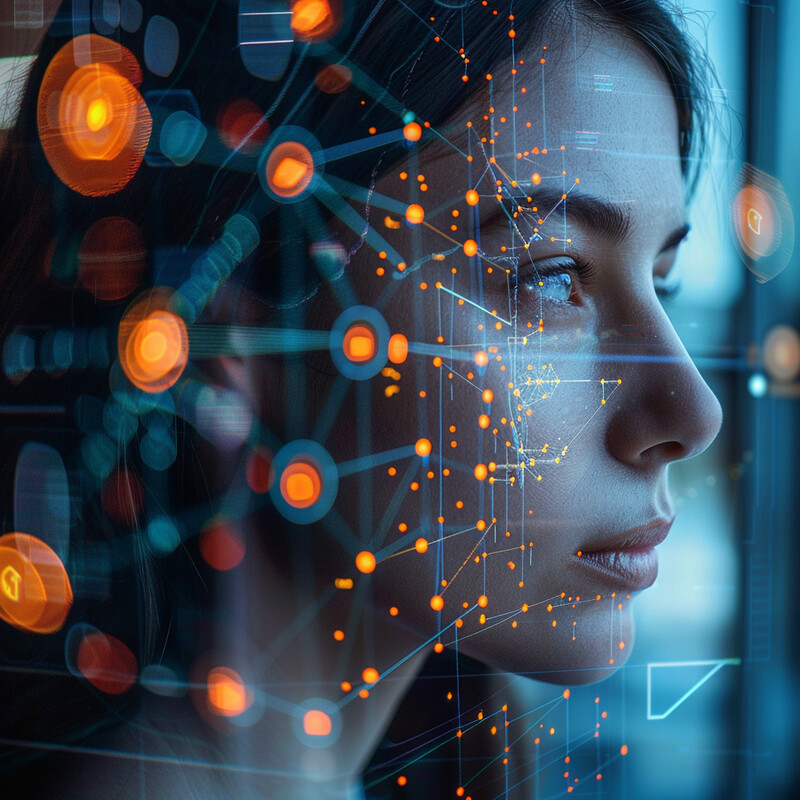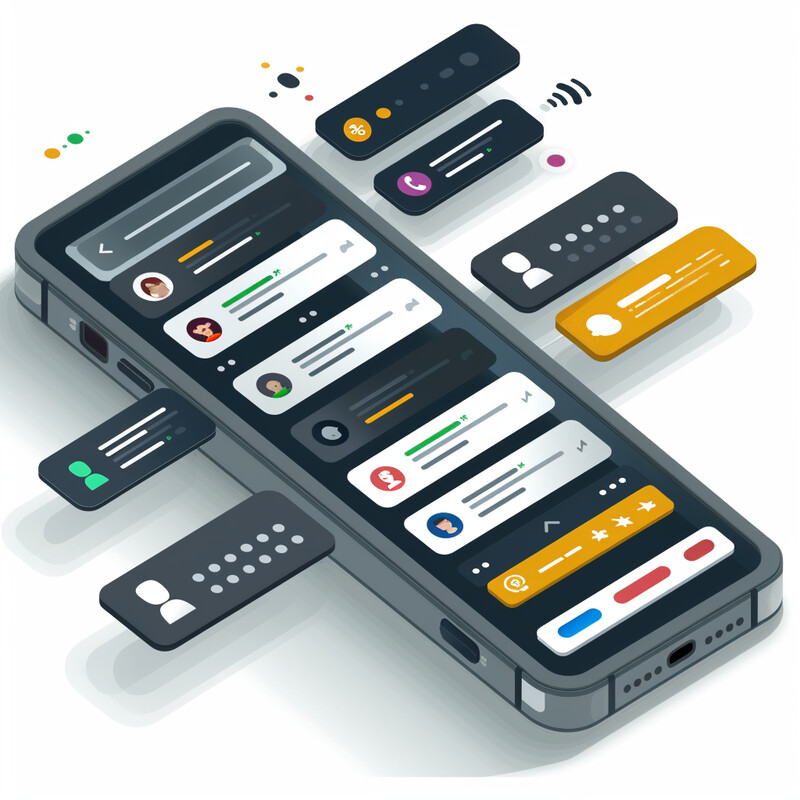1. Personalized Content Creation
AI enables marketers to create highly personalized content at scale, boosting audience engagement and conversion. By analyzing user data and behavior patterns, AI-driven tools (including generative AI) can tailor marketing copy, images, and recommendations to individual preferences. This has led to widespread adoption in content marketing – for instance, 85% of marketers now use AI tools for content creation. Personalized AI-generated content resonates more with users, resulting in higher engagement metrics and improved conversion rates. Marketers report that AI personalization significantly enhances content relevance, which in turn drives customer interactions and satisfaction. Overall, AI’s data-driven personalization is becoming central to content strategy, helping brands deliver the right message to the right person at the right time.

AI-personalized content yields measurable performance gains. For example, an Adobe Digital Insights analysis found that companies implementing AI-driven personalization saw a 40% increase in average order value compared to those using generic content approaches. Such personalized AI content also correlates with markedly higher engagement – one study noted content optimized with AI generated 83% higher engagement rates than traditionally created content. Moreover, business surveys show a strong consensus on AI’s value in personalization: 73% of marketers affirm that AI plays a key role in creating personalized customer experiences. These facts underscore that AI is not only widely adopted in content creation but also effective in driving better user responses and business outcomes through deeper personalization.
2. Customer Segmentation
AI refines customer segmentation by analyzing large datasets to identify patterns and group customers more precisely than manual methods. Machine learning algorithms consider behavior, demographics, purchase history, and more to form micro-segments that marketers can target with tailored strategies. This data-driven approach yields far more granular audience segments – often revealing new customer clusters that were previously overlooked. The result is more effective targeting and personalization for each segment. In fact, marketers widely recognize this benefit: over 70% agree that AI-driven analytics are crucial for understanding and segmenting customers to deliver personalized experiences. By leveraging AI for segmentation, companies can align products and messaging to specific customer needs, improving relevancy and engagement across diverse audiences.

Organizations adopting AI for customer segmentation and analysis are seeing clear improvements in marketing performance. Enhanced segmentation enables highly targeted campaigns that drive better conversion rates and ROI. For example, industry surveys indicate that businesses using AI to segment and personalize their marketing have achieved a 20% increase in sales on average compared to those not using AI. Furthermore, 48% of marketing leaders report that AI-based customer insights have made the biggest difference in how they interact with customers – suggesting that AI-informed segmentation leads to more meaningful engagements. By identifying the most valuable customer groups and their specific preferences, AI-driven segmentation allows marketers to allocate budgets more efficiently and craft messages that resonate strongly with each segment, ultimately improving campaign outcomes.
3. Optimized Ad Targeting
AI is revolutionizing digital ad targeting by processing vast consumer data to deliver ads to the most relevant audiences. Machine learning models analyze online behaviors – such as search queries, browsing history, and purchase patterns – to predict which users are most likely to respond to a given ad. This enables programmatic advertising, where AI systems automatically place and adjust ads in real time to reach high-probability consumers. The impact is significant: today, over 72% of all U.S. digital display ad spending is executed via AI-driven programmatic ads, reflecting how commonplace AI-optimized targeting has become. By continually learning and refining audience profiles, AI ensures ad campaigns focus on the right users at the right time, which increases click-through rates and maximizes return on ad spend.

Companies leveraging AI for ad targeting are seeing tangible improvements in advertising effectiveness and efficiency. A notable example is Meta (Facebook): after deploying advanced AI tools for ad targeting and creative optimization, Meta reported a 6% increase in ad impressions and a 14% rise in average ad price (CPM) in late 2024. According to Meta’s leadership, these gains were driven by more precise targeting that “drives more conversions”, allowing advertisers to bid more confidently for valuable impressions. Additionally, AI-targeted campaigns tend to yield better conversion outcomes; one study found AI-optimized campaigns achieved a 41% higher conversion rate compared to campaigns without AI optimization. These facts illustrate that AI not only automates ad placement but also substantially improves ad performance, resulting in higher ROI and revenue from digital advertising efforts.
4. Real-Time Campaign Adjustments
AI gives marketers the ability to monitor and adjust campaigns in real time, responding instantly to performance data. Machine learning systems track metrics like clicks, conversions, and engagement across channels as a campaign is live, then dynamically tweak elements (bids, budgets, audience targeting, or creative) to optimize results on the fly. This agility is a major shift from traditional campaigns that required manual analysis and slow adjustments. With AI, if an ad is underperforming or a particular audience segment is converting better, the system can immediately reallocate spend or modify targeting. Marketers value this speed: over 90% of those using AI report faster decision-making in campaign management, as the AI can surface insights and implement changes faster than any human team. In short, real-time AI optimization ensures that campaigns continuously self-improve, maximizing efficiency and effectiveness throughout their run.

Real-world data shows that AI-driven real-time adjustments lead to superior campaign outcomes. A study by HubSpot found that marketing teams using AI to dynamically optimize campaigns achieved a 14.6% conversion rate, dramatically higher than the 1.7% conversion rate for traditional non-AI campaigns. This indicates that AI’s rapid optimizations (e.g. pausing low-performing ads, boosting high-performing ones, adjusting bids by the minute) materially increase the percentage of audience reached who take action. Additionally, companies report significant cost savings from such AI optimizations – by automatically reallocating budget to the best-performing channels and creatives, marketers avoid wasted spend. For example, one analysis noted organizations saw an average 32% reduction in customer acquisition costs after implementing AI for real-time bid and budget adjustments. These facts demonstrate that AI’s ability to act on campaign data instantaneously not only improves conversion metrics but also makes marketing spend more efficient, leading to better overall ROI for digital campaigns.
5. Predictive Analytics
AI-powered predictive analytics allows marketers to forecast consumer behavior and market trends with greater accuracy. By examining historical customer data and broader market signals, AI models can predict future outcomes – such as which leads are likely to convert, what times of year demand will surge, or which products a customer might purchase next. This forward-looking insight enables companies to proactively adjust their strategies (inventory, content, promotions) in anticipation of what will happen, rather than reacting after the fact. Predictive analytics thus helps marketers stay ahead of trends. It’s increasingly common: 62% of marketers cite AI-based data analysis as one of the most valuable uses of AI in marketing. From forecasting sales figures to identifying at-risk customers for churn, AI-driven predictions inform decision-making at both the strategic and tactical levels, making marketing plans more data-driven and future-proof.

The use of predictive analytics in marketing correlates with substantial performance benefits. Companies that leverage AI to anticipate customer needs and personalize outreach accordingly often see higher revenue and retention. For instance, a report by the Digital Marketing Institute noted that organizations using AI (including predictive models) in their marketing experienced a 20% increase in sales on average, compared to those not utilizing AI. Predictive AI can also improve efficiency – by predicting which campaigns will yield the best results, marketers can allocate budgets more effectively and avoid low-yield efforts, potentially reducing marketing costs. In one case, a global retailer used AI predictive models to optimize its campaign timing and targeting, leading to a 30% uplift in ROI and a reduction in wasted ad spend. These outcomes underscore that predictive analytics doesn’t just provide nice-to-have insights; it directly drives better financial results by enabling marketing that is proactive, personalized, and precisely timed to customer behavior forecasts.
6. Chatbots for Customer Interaction
AI-powered chatbots have become a cornerstone of customer service in digital marketing, providing instant, around-the-clock customer interaction. These chatbots use natural language processing to simulate human-like conversations, handling common inquiries, FAQs, and support issues without human intervention. The advantage is twofold: customers get immediate responses 24/7, and businesses can scale support to thousands of users simultaneously. Modern chatbots are deployed widely – about 80% of companies are using or planning to use AI chatbots for customer service by 2025 – indicating broad acceptance of this technology. They can greet website visitors, assist with product information, and even guide users through purchases. While complex or sensitive issues may still be escalated to human agents, AI chatbots significantly reduce response times and free up human staff for higher-level tasks. Overall, they enhance the customer experience by ensuring help is always available, which in turn can improve customer satisfaction and engagement.

The impact of AI chatbots on efficiency and cost savings in customer interaction is well documented. Studies show that implementing chatbots can save businesses up to 30% in customer support costs by automating routine inquiries. In practice, companies have reported substantial reductions in workload for their support teams – one industry analysis found AI-driven automation led to a 30% decrease in customer service operational costs on average. At the same time, consumers are increasingly comfortable with chatbot interactions for simple requests. Recent surveys in 2024 showed that 68% of customers have used a chatbot for customer service at least once. These users cite quick answer retrieval and 24-hour availability as key benefits. Importantly, chatbot technology is improving with AI advancements, leading to higher accuracy in understanding queries and more natural dialogues. As a result, many businesses are not only cutting costs but also seeing improved customer satisfaction scores for first-line support. The evidence suggests that AI chatbots effectively handle a large volume of customer needs, delivering speedy service while lowering support expenses.
7. Email Marketing Optimization
AI enhances email marketing by personalizing content and optimizing campaign parameters in ways that would be difficult and time-consuming manually. AI algorithms can tailor email subject lines, body content, and product recommendations for each recipient based on their past behavior and preferences, resulting in more relevant emails for every subscriber. Additionally, AI can analyze engagement data to predict the best times to send emails to each user, boosting open and click-through rates. List management is also improved: AI systems automatically segment email lists by user behavior (active vs. inactive users, interests, etc.) and can even cleanse lists by removing or re-engaging unresponsive contacts. The adoption of AI in email marketing is already significant – about 61% of marketers use AI to optimize email campaigns, from send-time optimization to personalized content. By leveraging AI, email marketers can run smarter campaigns that adapt to each subscriber, which leads to higher engagement and conversion from email as a channel.

The use of AI in email marketing yields clear gains in engagement and efficiency. Marketers report that AI-driven personalization in emails improves key metrics like open rate and click rate. In one analysis, brands that personalized email content through AI saw open rates increase by 26% compared to non-personalized emails. Moreover, AI automation in email can significantly boost revenue: automated, behavior-triggered emails (often powered by AI analysis of user actions) accounted for 37% of email-generated sales in 2024, despite being only a small fraction of total email volume. This indicates that AI-targeted emails (like tailored product recommendations or cart reminders) convert far better than generic blasts. AI also streamlines workflows – it’s noted that using AI for tasks like subject line testing and send-time optimization can save marketers hours of manual A/B testing. Importantly, 88% of marketers using AI have seen an improvement in email personalization and overall content quality, which translates into more engaged subscribers. These facts demonstrate that AI is not only automating email marketing but also materially improving its effectiveness by delivering more timely, relevant, and impactful emails to consumers.
8. Enhanced Content Curation
AI helps marketers curate content by automatically filtering and recommending material that will interest specific audience segments. Rather than a one-size-fits-all content feed, AI systems learn from each user’s past interactions (clicks, views, likes) to deliver a personalized stream of articles, videos, or product suggestions most relevant to them. This keeps audiences more engaged, as they are consistently presented with content aligned to their preferences. For instance, streaming services and news apps use AI to curate recommendations – a notable case is Netflix, where about 75% of what people watch comes from the platform’s AI-driven recommendations. In digital marketing contexts, an AI-curated blog or product feed can adapt in real time to user behavior, showing more of what a customer is likely to consume. This level of personalization encourages users to spend more time on sites and return more frequently. In fact, 56% of online shoppers are more likely to return to a website that provides product recommendations powered by AI . By keeping content fresh and highly relevant for each viewer, AI content curation deepens user engagement and fosters loyalty.

Personalized content curation driven by AI has proven its value in both user engagement and sales. A clear example is Amazon’s recommendation engine, which suggests products based on a shopper’s browsing and purchase history – these AI-powered recommendations are so effective they are estimated to generate around 35% of Amazon’s total sales. This demonstrates how curating the right content (or products) for each user can directly impact revenue. Similarly, media companies find that AI-curated content increases user engagement metrics (like time on site and content consumption). For example, Google News uses AI to curate news for readers, which has led to higher click-through rates on suggested stories. Moreover, curated experiences improve customer retention: users are more likely to keep coming back when the platform “learns” their tastes – as noted, over half of consumers (56%) say they’d revisit sites that recommend relevant content. Marketers also observe that when implementing AI content recommendations on webpages or email newsletters, overall engagement and conversion tends to rise (often by double-digit percentages) because the audience is continually presented with items that match their interests. These facts highlight that AI content curation not only streamlines content discovery for consumers but also drives key business outcomes like repeat traffic, longer engagement, and increased sales.
9. SEO and Content Strategy
AI is transforming SEO (Search Engine Optimization) and content strategy by providing data-driven insights and automating optimization tasks. AI tools can research keywords, analyze search trends, and even evaluate competitor content much faster than humans. This helps marketers identify the content topics and search terms most likely to drive traffic. AI can also optimize content in real time – for example, suggesting keyword additions, ideal content length, or link improvements to improve a page’s ranking. Many marketing teams have embraced these capabilities; over half of marketing professionals (51%) now use AI tools to optimize content for search engines and other channels. By using AI for SEO, companies can more efficiently keep up with Google’s evolving algorithms, ensuring their content strategy aligns with what users are searching for. Importantly, AI can process the massive volumes of search data available (from voice queries to mobile searches) and distill actionable strategy tips – such as which new topics to create content on or how to tweak existing pages for better visibility. The result is an SEO approach that’s continually refined by machine learning, often yielding better rankings with less trial-and-error.

Integrating AI into SEO and content strategy leads to marked improvements in organic traffic and conversion from search channels. According to industry research, 65% of businesses have noticed better SEO results with the help of AI, and websites using AI for SEO have seen up to a 70% increase in organic traffic. These gains stem from AI’s ability to optimize numerous ranking factors (keywords, meta tags, site structure) in a way that resonates with search engine algorithms. Furthermore, AI-optimized content doesn’t just attract visitors – it converts them at higher rates. One study reported that AI-driven SEO strategies achieved a 14.6% conversion rate, significantly higher than the 1.7% conversion rate for traditional SEO methods. This suggests that the traffic being brought in via AI-informed content strategy is more qualified and engaged. Companies are also finding efficiency benefits: AI can reduce keyword research and SEO analysis time by automating these processes, allowing marketing teams to focus on content quality and strategy. All told, the evidence shows that AI is a game-changer for SEO, driving more traffic and better performance from search by optimizing content in ways that are both data-rich and dynamically adaptive to search engine trends.
10. Voice Search Optimization
With the rise of voice-activated assistants like Siri, Alexa, and Google Assistant, AI is crucial in optimizing digital content for voice search queries. Voice searches are phrased differently than typed searches – they tend to be longer and more conversational, often in question form (e.g., “What are the best running shoes under $100?”). Marketers are now using AI to analyze these natural-language queries and adjust their SEO and content strategies accordingly. This includes targeting long-tail keywords and providing direct, concise answers that AI assistants can easily retrieve. The growing usage of voice search makes this optimization important: as of 2024, roughly 1 in 5 people worldwide use voice search in their regular routines. Additionally, about 27% of mobile users leverage voice search on their devices, showing that a significant segment of searches now come through spoken queries. AI helps by parsing voice data to understand intent and by structuring website content (with schema markup, Q&A formats, etc.) so that voice assistants can find and vocalize the answers. Optimizing for voice search ensures that a business’s content remains discoverable and relevant as consumers increasingly “ask” rather than type their queries.

Adapting to voice search with the help of AI can significantly increase a brand’s visibility and engagement, especially for local businesses and informational queries. Studies show that voice search is heavily used for local intent – 58% of consumers have used voice search to find local business information. Businesses that employ AI to optimize for these local voice queries (by incorporating conversational keywords like “near me” and ensuring their listings are voice-search friendly) are capturing more of this traffic, often leading to higher in-store visits and calls. Moreover, AI has revealed that achieving a featured snippet (the concise answer box on Google) is critical for voice SEO: an estimated 40% of voice search answers are drawn from featured snippets. This has prompted marketers to structure content specifically to earn those snippets, using AI tools to determine the most likely questions and best answer formats to rank for voice results. By embracing these AI-driven insights, companies have improved their odds of being the one answer a voice assistant reads aloud – which can dramatically increase click-through rates (as many voice interfaces also show the source link) and brand authority. In summary, businesses that leverage AI to optimize for voice search are gaining a competitive edge in reaching customers who search hands-free, resulting in more traffic and customer actions from the growing voice user segment.